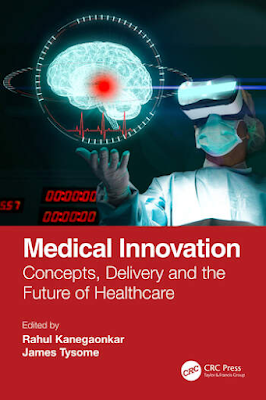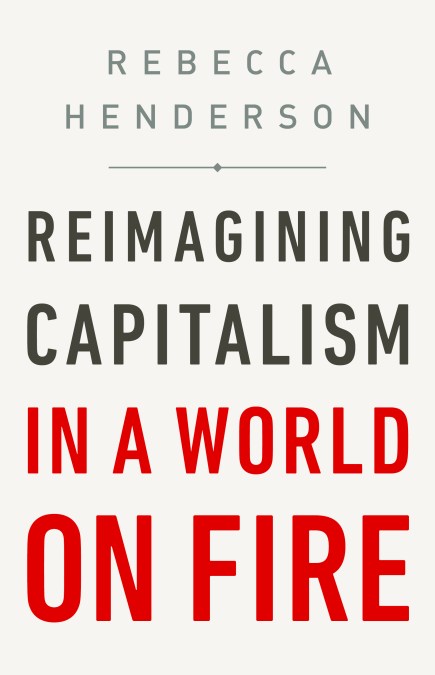Economic Markets and Pharmaceutical Innovation
Aquí teniu un resum detallat de l'article "Economic Markets and Pharmaceutical Innovation" de Craig Garthwaite, basant-me en la informació proporcionada a les fonts:
L'article, publicat al Journal of Economic Perspectives, ofereix un resum ampli del coneixement existent sobre diversos aspectes econòmics importants del mercat farmacèutic relacionats amb el procés innovador. L'autor és Craig Garthwaite, Professor d'Estratègia a la Kellogg School of Management de la Northwestern University. L'objectiu és ajudar aquells interessats o involucrats en debats sobre la indústria farmacèutica a entendre els fets i patrons econòmics fonamentals al voltant dels incentius per al desenvolupament de medicaments.
L'article comença assenyalant una tensió central en els mercats farmacèutics: tot i que els beneficis dels fàrmacs innovadors són poc discutits, molts pregunten raonablement "A quin preu?". Les enquestes d'opinió pública mostren una favorabilitat neta negativa per a la indústria farmacèutica, tot i que els fàrmacs innovadors han tingut un èxit enorme en el tractament i la curació de diverses condicions. Per exemple, les innovacions farmacèutiques són responsables del 35% de la notable disminució de la mortalitat cardiovascular del 1990 al 2015. Condicions prèviament mortals com el VIH/SIDA s'han transformat en malalties cròniques manejables, i l'hepatitis C s'ha curat. Teràpies gèniques i avanços en immuno-oncologia estan proporcionant millores significatives. Recentment, han aparegut tractaments efectius per a l'obesitat (agonistes GLP-1) amb millores en resultats cardiometabòlics.
Els preus elevats dels medicaments de marca innovadors no són accidentals, sinó el resultat de polítiques destinades a proporcionar incentius financers per al desenvolupament continu de nous productes. Aquestes polítiques són necessàries a causa d'una fallada de mercat intrínseca a la innovació farmacèutica. Les empreses que desenvolupen productes nous creen béns públics en forma de coneixement científic. Un cop desenvolupat aquest coneixement, és relativament fàcil per a una altra empresa replicar el producte a un cost fix molt menor i reduir el rendiment financer per a l'innovador original. Per tant, sense protecció de la propietat intel·lectual, poques empreses racionals invertirien els grans costos i riscos necessaris per a la innovació, especialment amb llargs períodes de retorn i baixos costos d'imitació. El sistema actual implica que els governs proporcionin protecció de la propietat intel·lectual per períodes limitats, permetent a les empreses innovadores vendre els seus productes a un preu més alt sense competència directa.
Aquesta protecció de la propietat intel·lectual crea un equilibri entre accés a curt termini i incentius a llarg termini. Els preus elevats redueixen l'accés a les innovacions existents a curt termini, cosa que pot tenir conseqüències devastadores per als pacients. Tanmateix, aquests preus elevats proporcionen incentius financers per a futures inversions en el desenvolupament de nous productes, que podrien resoldre la manca de tractaments per a condicions que actualment no en tenen.
El desenvolupament de productes farmacèutics innovadors requereix inversions grans, fixes i enfonsades en R&D (recerca i desenvolupament). Aquests fons provenen d'empreses privades, universitats i institucions públiques. Molts productes exitosos comencen en laboratoris acadèmics i petites firmes de biotecnologia. La inversió del sector privat en R&D farmacèutic va ser de 276.000 milions de dòlars a nivell mundial el 2021.
Nombrosos estudis empírics mostren una relació entre la mida esperada del mercat d'un fàrmac i la magnitud de les inversions en R&D. Les firmes responen a la mida econòmica potencial del mercat d'un producte, no només al nombre de pacients potencials. Per exemple, l'expansió de Medicaid als EUA va tenir un augment modest en els ingressos a causa dels preus més baixos que paga Medicaid, i no va resultar en un augment de les inversions en R&D. Les tàctiques de negociació més fortes, com l'exclusió de cobertura, van reduir el retorn financer per pacient potencial i van disminuir les inversions en R&D en àrees amb substituts terapèutics competidors. La diferència de preus entre els EUA i altres mercats desenvolupats suggereix que molts altres mercats són probablement massa petits per ser determinants en les decisions d'inversió en desenvolupament de fàrmacs de les firmes innovadores, cosa que explica per què poden negociar preus molt més baixos sense grans temors de reduir la innovació futura.
El benefici exacte creat per aquestes inversions incrementals en R&D no està clar. La quantitat de despesa en R&D o el nombre de productes nous són mètriques incompletes del benefici social. Els estudis sobre la novetat científica dels fàrmacs marginals donen resultats contradictoris. Alguns estudis suggereixen que els augments de la mida del mercat per polítiques com Medicare Part D van portar a productes que no eren científicament nous en el seu enfocament bàsic, sinó noves combinacions d'enfocaments existents. Altres troben que les firmes amb grans infusions de caixa per polítiques com Medicare Part D van augmentar les inversions en productes més científicament nous, independentment dels retorns potencials, suggerint que les infusions de caixa van reduir les friccions en el mercat financer. Aquests resultats suggereixen que promoure la innovació més científica pot requerir abordar impediments específics com l'aversió al risc o la manca de ciència bàsica. La novetat científica no és suficient per encapsular els efectes del benestar dels nous productes; les noves aplicacions de mecanismes d'acció existents també poden tenir impactes significatius en la salut i el benestar econòmic.
La determinació dels ingressos potencials per a un nou producte farmacèutic depèn de qui és el client, quin és exactament el "preu" i la mida esperada del mercat. Això requereix comprendre el mecanisme d'establiment de preus, els determinants de la demanda i els factors institucionals que els influeixen.
La cadena de valor farmacèutica implica tres tasques perquè una innovació tingui èxit comercial: (1) aprovació per un regulador, (2) acceptació de pagament per un tercer pagador, i (3) adopció per part dels clínics i pacients.
Hi ha dues cadenes de valor principals:
- Fàrmacs al detall ("retail pharmaceuticals"): Prescrits per un metge i comprats a una farmàcia. La relació entre els tercers pagadors (asseguradores), les firmes gestores de beneficis farmacèutics ("pharmacy benefit managers" o PBMs) que contracten, i els fabricants de medicaments és crucial. Els productes entren amb un preu de llista ("list price"). El PBM negocia un descompte amb el fabricant, conegut com a "rebate" (rebaixa), que varia segons el poder de negociació. Els rebaixes es mantenen confidencials per facilitar descomptes més grans. Els PBMs i els fabricants també negocien la gestió de la utilització, on majors descomptes resulten en menys eines com autoritzacions prèvies o teràpia esglaonada. La gestió de la utilització també pot incloure eines financeres com deduccibles, coassegurança i copagaments. Els PBMs obtenen ingressos de quotes per membre per mes, un percentatge de la rebaixa negociada i el diferencial entre el que paguen a la farmàcia i el que el patrocinador del pla els paga ("spread pricing"). La compensació dels PBMs, especialment lligada a les rebaixes, genera controvèrsia.
- Fàrmacs administrats per metges ("physician-administered drugs"): Sovint són productes biològics administrats en un consultori mèdic. Aquests es paguen sota la porció "mèdica" del benefici de l'assegurança i no involucren PBMs. Els proveïdors sanitaris els adquireixen, emmagatzemen i administren. Se'ls sol pagar un marge sobre el preu mitjà de venda del producte. A Medicare, els metges reben el 106% del preu mitjà de venda, mentre que els mercats privats solen tenir marges més grans. Aquesta forma de pagament pot distorsionar l'entrada i la difusió de nous productes, ja que els metges reben més ingressos per prescriure productes de major preu. Això ha estat una preocupació política per als incentius al desenvolupament de biosimilars. Els proveïdors més grans poden negociar descomptes més grans, cosa que pot influir en les decisions de consolidació de les firmes. Aquesta cadena de valor també pot generar distorsions, ja que les decisions de cobertura d'un pagador poden influir en la disponibilitat del fàrmac per a pacients coberts per altres pagadors.
Les negociacions determinen el preu capturat pels fabricants. Les rebaixes han crescut en magnitud i importància estratègica. L'escletxa entre el preu de llista i el preu net per a fàrmacs al detall es va mantenir relativament estable del 2009 al 2013, però després el preu de llista va escalar ràpidament mentre que el preu net va romandre constant. El 2019, la magnitud de les rebaixes es va duplicar i la mitjana era aproximadament del 53%. El preu de llista i la rebaixa depenen de l'entorn competitiu. Teràpies relativament úniques tenen preus nets més alts que s'apropen més als preus de llista. L'entrada de productes competidors, com va passar amb els tractaments per a l'hepatitis C, pot portar a fortes negociacions i disminucions de preus. L'entrada de nous productes pot estendre's més enllà de l'augment de la competència; les segones i terceres generacions de fàrmacs poden proporcionar una eficàcia superior, menys efectes secundaris o ser millors per a grups de pacients específics. En aquests casos, els preus no cauen amb l'entrada, sinó que cada versió del fàrmac tracta una població més petita i específica.
Entendre la disposició a pagar ("willingness-to-pay") per als productes farmacèutics és complex. El guany en salut és un punt de partida lògic, sovint quantificat mitjançant anys de vida ajustats per qualitat (QALYs). Tanmateix, en un mercat amb assegurances, el consum es finança amb recursos de tot el grup de risc, molts dels quals no es beneficien directament de la transacció. Hi ha altres fonts potencials de valor que van més enllà del benefici directe per al pacient, com el valor d'opció per a pacients no afectats, el valor del progrés científic per a tractaments futurs i el valor d'assegurança de la innovació mèdica. Les innovacions mèdiques transformen el risc mèdic en risc financer per als individus. El valor d'assegurança d'una nova innovació pot superar el valor de l'assegurança de salut mateixa, especialment per a malalties greus amb tractaments limitats. Aquest valor d'assegurança podria explicar per què molts tractaments per a malalties rares superen els llindars basats únicament en el valor clínic. El progrés científic és iteratiu, i el valor futur creat per les innovacions futures hauria de ser tingut en compte en els ingressos dels fabricants que fan progrés incremental. Els esforços per vincular els preus dels fàrmacs al valor basat únicament en resultats clínics podrien negligir aquests altres beneficis de la innovació i crear preus artificialment baixos, alterant els incentius per invertir.
Els fabricants intenten augmentar els ingressos potencials mitjançant esforços de comercialització dirigits a pacients i proveïdors. Aquests esforços estan regulats per la FDA. Les empreses només poden publicitar per a indicacions aprovades, tot i que els metges poden utilitzar productes aprovats per a qualsevol indicació. Obtenir l'aprovació per a noves indicacions pot augmentar la informació del mercat i l'ús. Hi ha preocupacions sobre si la despesa en màrqueting és un malbaratament o un complement a la R&D; si augmenta la mida del mercat potencial, pot encoratjar la inversió en desenvolupament de productes.
El màrqueting dirigit directament als consumidors (DTC advertising) només està permès als EUA i Nova Zelanda en mercats de salut. Hi ha debat sobre si és principalment informació o persuasió. Pot informar els pacients sobre possibles tractaments, i estudis troben que pot augmentar l'ús de medicaments genèrics, cosa que seria coherent amb l'augment de visites mèdiques. D'altra banda, en una població assegurada, pacients i proveïdors podrien no ponderar adequadament el valor dels productes si no afronten el cost marginal, cosa que podria portar a l'ús de medicaments poc rendibles. Estudis han trobat que l'ús resultant del màrqueting DTC pot generar guanys per als pacients, com l'augment de l'oferta laboral o una major adherència. L'efecte sobre el benestar depèn dels beneficis clínics del fàrmac anunciat. Alguns estudis suggereixen que les firmes poden ser més propenses a anunciar fàrmacs amb menors beneficis clínics, mentre que altres troben beneficis econòmics significatius per a fàrmacs altament efectius com les estatines, superant la despesa total en publicitat DTC en el mercat.
El màrqueting dirigit als proveïdors ("detailing") implica fabricants dirigint-se als metges. La majoria dels recursos de màrqueting es dirigeixen als metges. La pregunta clau és si aquests esforços augmenten la informació disponible per als metges o només busquen influir en el seu comportament de prescripció mitjançant beneficis tangibles. Estudis suggereixen que els pagaments als metges porten a petits augments en les prescripcions i la despesa dels pacients, generant un retorn econòmicament significatiu per als fabricants. L'impacte en el benestar depèn de per què els pacients no accedien prèviament a medicacions efectives i l'eficàcia de les que acaben prenent. Alguns estudis troben que el màrqueting als metges pot augmentar l'ús tant en pacients d'alt com de baix risc d'esdeveniments adversos, generant escepticisme sobre la precisió de la informació proporcionada. Igual que amb la publicitat DTC, l'anàlisi de benestar per al detailing als metges és complex i depèn de la classe de fàrmacs. Les firmes coordinen els seus esforços de comercialització DTC i dirigits als metges.
Els incentius per a la innovació depenen que les firmes obtinguin marges positius per recuperar les inversions en R&D i regulació. Avaluar els efectes agregats requereix considerar l'impacte de les assegurances. Una assegurança que funcioni bé pot aïllar els pacients del cost directe, reduint les pèrdues de benestar per preus alts. No obstant això, estudis suggereixen que en el mercat nord-americà, altament assegurat, les quantitats de medicaments disminueixen poc després de la pèrdua de patents tot i la caiguda dels preus, indicant un grau limitat en què els preus alts limiten el consum en mercats amb assegurança. Això pot no ser cert en mercats sense assegurança o amb cost-sharing elevat. L'estructura de l'assegurança és important.
L'article descriu tres programes públics d'assegurança de medicaments:
- Medicaid: Cobreix població de baixos ingressos i discapacitada. Utilitza dos mètodes per assegurar els preus més baixos: (1) rebaixes al govern estatal de Medicaid iguals al major del 23,1% del preu de llista o la major rebaixa a qualsevol comprador comercial ("best price"), i (2) rebaixes "inflacionàries" addicionals basades en el creixement del preu de llista des del llançament del producte. Això resulta que Medicaid només paga el 35% del preu mitjà pagat per les asseguradores a Medicare Part D i el mercat comercial. Molts productes amb preus comercials alts es venen a Medicaid pràcticament sense cost. Les firmes reaccionen a aquestes polítiques; la regla del "best price" augmenta els costos per als fabricants de proporcionar descomptes al mercat comercial, actuant com un impost implícit en aquest mercat. Les rebaixes inflacionàries incentiven a limitar el creixement del preu de llista amb el temps.
- El Programa de Preus de Medicaments 340B: Creat el 1992 per subvencionar hospitals que proporcionen atenció no compensada. Permet a certs hospitals comprar productes farmacèutics aproximadament al "best price" de Medicaid. Poden vendre aquests productes a pacients ambulatoris. Quan venen a pacients de Medicaid, han d'acceptar el "best price". Per a pacients comercials o sense assegurança, poden carregar els preus que negociïn, però una gran fracció no trasllada els descomptes a pacients sense assegurança o amb poca assegurança. El programa ha crescut significativament, amb un augment enorme del nombre de farmàcies contractades i del valor dels productes. Té implicacions a nivell de mercat; en reduir els ingressos disponibles per a fàrmacs innovadors, pot disminuir els incentius per a la R&D. Té un efecte similar al de Medicaid en els preus comercials. També pot tenir altres efectes, com reduir l'incentiu a proporcionar rebaixes als plans comercials i, en alguns casos, fer que els patrocinadors dels plans paguin preus de llista més alts. El creixement del 340B s'associa amb augments en les primes d'assegurança de salut comercial. El programa està relativament poc estudiat en comparació amb altres.
- Medicare Part D: Creat el 2006 com un programa d'assegurança de medicaments al detall per a la gent gran. Està molt subvencionat pel govern, però gestionat per firmes privades que negocien preus de manera similar al mercat comercial. Històricament, incloïa un component de reassegurança ("catastrophic region") on el govern assumia la major part de la despesa un cop el pacient assolia un cert límit de despesa de butxaca. L'estructura inicial incentivava tant els plans com els fabricants a augmentar ràpidament els preus de llista, ja que això feia que els pacients de cost elevat entressin més ràpidament a la regió catastròfica coberta principalment pel govern. La Llei de Reducció de la Inflació (IRA) del 2022 va canviar l'estructura de la regió catastròfica, transferint més càrrega als patrocinadors dels plans i eliminant la porció pagada pel pacient. La IRA també va concedir autoritat a CMS per negociar preus més baixos per a fàrmacs seleccionats després de 9 anys (molècules petites) o 13 anys (biològics) de la primera aprovació. Aquest període no s'estén per noves indicacions. Les implicacions de la IRA sobre la innovació encara es debaten i són objecte d'investigació.
El cost compartit estratègic ("strategic cost sharing") en els mercats d'assegurança de medicaments implica que els pacients amb malalties cròniques que requereixen fàrmacs cars s'enfronten a un cost compartit elevat, cosa que essencialment reintrodueix la subscripció mèdica implícita. Això transfereix diners dels afiliats malalts als patrocinadors dels plans. Els fabricants han intentat disminuir l'efecte del cost compartit elevat mitjançant programes d'assistència, com els cupons de copagament ("copayment coupons"), on el fabricant paga el cost compartit en nom del consumidor. Aquests cupons estan permesos al mercat comercial, però no en programes governamentals com Medicare i Medicaid. La lògica estratègica per a les empreses és clara: un cupó actua com un descompte addicional, especialment amb coassegurances elevades. Les implicacions varien segons el tipus de competència; amb competència genèrica, els cupons poden desplaçar la quota de mercat cap a la versió de marca i augmentar els beneficis del fabricant original, sense augmentar necessàriament l'accés a la molècula. Per a productes sense substituts genèrics, els cupons augmenten el preu net (aproximadament un 8%) perquè debiliten la capacitat de l'assegurador comercial d'utilitzar el cost compartit en les negociacions, però augmenten l'accés a molècules específiques. Els PBMs i els patrocinadors dels plans intenten contrarestar aquestes estratègies, fins i tot excloent fàrmacs dels seus formularis. Els cupons no són rendibles per als fabricants si el fàrmac no està cobert. Limitar el cost compartit (com el límit per a la insulina a Medicare Part D sota la IRA) redueix la capacitat dels asseguradors d'utilitzar el cost compartit com a eina de negociació.
La transició de l'exclusivitat de mercat és important. Després que expiri la protecció de la propietat intel·lectual, es requereix una competència robusta. Les empreses de marca tenen incentius per estendre el seu període d'exclusivitat mitjançant l'ús extensiu de patents i secrets comercials. Els fàrmacs moderns complexos sovint estan coberts per múltiples patents (sobre la molècula, el procés de producció, nous usos), cosa que pot crear un "patent thicket" que augmenta els costos d'entrada per als competidors. Mentre que algunes firmes probablement fan servir estratègies de "thicketing", el simple fet de tenir nombroses patents no prova intencions nefastes; moltes innovacions impliquen nous usos per a productes existents, que la societat pot valorar. Les preocupacions s'haurien de centrar en la validesa de les patents subjacents.
Un sistema que funcioni bé requereix una competència robusta post-exclusivitat. Per a molècules petites, els competidors genèrics poden fabricar un producte bioequivalent exacte. L'entrada de genèrics porta a grans reduccions de preus en mercats prou grans per a múltiples entrants. Tanmateix, en mercats petits, hi pot haver espai per a pocs o només un fabricant, cosa que els pot donar poder de preu. Trobar maneres de reduir els costos i retards d'entrada per als genèrics podria augmentar els beneficis per als consumidors.
Moltes innovacions recents són productes biològics de molècula gran. En aquest cas, els nous entrants creen biosimilars, que clínicament s'assemblen al producte de referència, però no són realment bioequivalents. Els mercats de biosimilars han tingut dificultats per aconseguir reduccions de preus similars a les dels genèrics. Com que no són bioequivalents, les polítiques actuals no permeten la substitució automàtica a la farmàcia. Els pacients que ja utilitzen un producte biològic de marca poden ser reticents a canviar a un biosimilar. Els fabricants de biosimilars han de comercialitzar els seus productes de manera activa.
L'estructura dels contractes de rebaixa també pot crear barreres d'entrada per als biosimilars. Els contractes per a productes incumbents poden condicionar les rebaixes a que el PBM no inclogui productes rivals (una "rebaixa mur" o "trampa"). Un patró d'aquests contractes pot desincentivar els fabricants potencials de biosimilars.
En resum, els incentius per a la innovació farmacèutica estan fortament influenciats per les barreres als nous productes i els detalls de la propietat intel·lectual. Preguntes importants inclouen la validesa de les patents addicionals, les regles per a fàrmacs de mercats petits, les regles per a l'entrada de biosimilars, i les regles que regeixen les estructures contractuals de formularis, rebaixes i cost compartit. Les empreses incumbents busquen estendre l'exclusivitat, mentre que els entrants potencials sovint estan poc representats en l'elaboració d'aquestes regles. Confiar en l'autoregulació per obtenir una regulació òptima és temerari. Aquestes qüestions reflecteixen els compromisos generals presents en un sistema que utilitza incentius de mercat per promoure i mantenir la innovació que crea benestar.
















